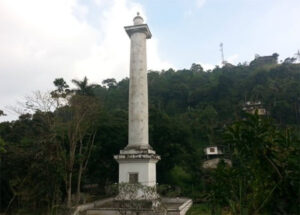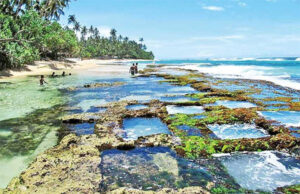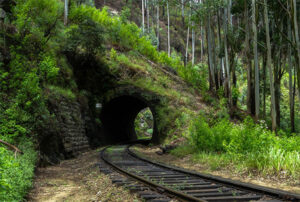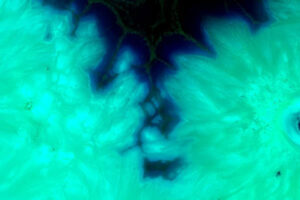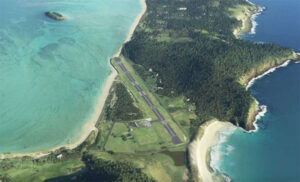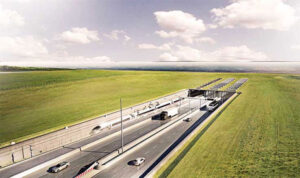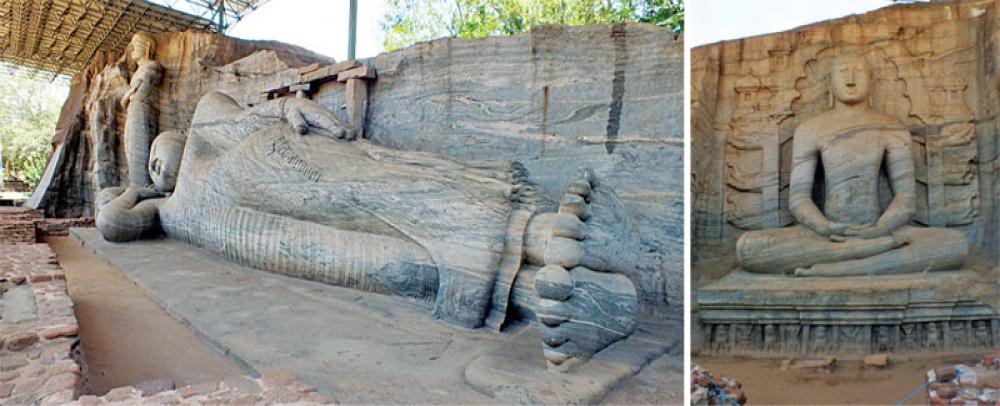
It is a peculiar fact that the capital of Anuradhapura was the capital for about one and a half centuries. Although the name of the kingdom is used by the kingdom of Anuradhapura, it has several names used for the kingdom. Batawatipura, Vijithapura, Kandanapura and Wijayarajapura were the names.
It was King Maha Wijayabahu who was liberated from the Chola power of Polonnaruwa. Maha Parakramabahu and Nissankamalla were the kings of the Polonnaruwa kingdom. It is also significant that the reconciliation of the three sects between King Parakramabahu and the king who made the country king of Maharaja, like King Vijayabahu, who made this country self sufficient in self-sufficiency in rice, The Polonian discourse of King Parakramabahu of this is mentioned in the sacred area known as the Utharamavaya or Gal Viharaya.
Among the Buddha statues stoned in the Polonnaruwa Gal Vihara statue is a two-time statue. One of these statues was harvested in a small cave, called the Wijadhantharaya, which was dug out of rock. The other large seated statue is formed in the far left of the rock. The statues of the stone statue of the Gal Viharas can be specially cited as belongings of the Polonian era. The second part of Mahavamsa, as Parākramabāhu I (1153-1186), is considered to be the most powerful king of Polonnaruwa. This is confirmed by the letter from Polonnaruwa, which has been engraved on this statue.
The architectural masterpieces of the Buddha statue as well as the artistic tradition of the Buddha statue in the Anuradhapura period have revealed the great wisdom and great kindness of the Buddha, such as the Buddha statues of the Pollonian era. Therefore, it is very clear that the concept of the concept is quite different .While Buddha statues are well – known features in the Buddha Statues of Anuradhapura, full lips of soft – witted and tempered faces that show the world ‘s victory.
The characteristics of the greatness of the greatness of the envy of the entire animal that was acquired by the control of the body from the emanation of the spirit has been revealed in the Buddha statues. Prof. Senarath Paranavithana, said that these statues are ancient works of ancient Sri Lankan artisans. (The Sculpture by Panditha Dr. Nandadewa Wijesekera, published on behalf of the Centenary Anniversary of the Department of Archeology, by Professor H. Basnayake) (99-1990)
The Buddha is in the Gal Viharaya
Professor Anuradha Seneviratne said: The statue shows that two statues and one sleeping idol from the seated position, the Parakramabahu the Great has built three caves only for the Buddha Statue. What if this statue is 23 feet tall? In order to complete the space for another statue, this Buddha statue could be made especially for the Buddha statue of one Buddha, one forgotten posture. We have never known that an emptiness has been done by an individual who has been unpacked and an image has been completed. Reflecting the style of the statue reflects somewhat the characteristics of this era.
However, according to the belief, the Buddha’s grand old dynasty is a reclining posture associated with the present statue. It is further difficult to accept that the idol-like statue of Ananda Thero is the main student of the Lord Buddha. It is doubtless that the Buddha is portraying this statue on the island of Sri Lanka with a coarse hair.
This statue is symbolized by the Buddha, and the seal that depicts his hands creates two ideologies. Prof. Paranavithana believes that the Buddha presents the inherent quality of the Buddha’s sadness in the sadness of others. This is what Professor Leelananda Premathilake has said is that this is a reflection of the Bodhi tree that Buddha provided to them and as a reflection of the solemn larva pooja during the second week. As a result, we recall this event by planting a Boh Tree in the Cultural Triangle Project (now the Central Cultural Fund). Prof. Anuradha Seneviratne completely dismisses the second opinion and discard the original opinion of Professor Senarath Paranavithana.
(Polonnaruwa – Prof. Anuradha Senevirathna pp. 207-208 (1998 publication of the Archaeological Department)
This sturdy statue can be seen in a staggering pattern with a paddle on the base of the statue, slightly bent over the head and on the side of the curtain. As such, this statue is close to the statue of the Thissamaharama of Polonnaruwa.
The fine scale features, the smooth posture and the face of the Samadhi, and the aesthetic value of the statue so great that visitors are sensitive to that great moment in the great man.
